“Datia mein aap kya dekhenge? Wahan dekhne layak kuch bhi nahin hai” (What will you see in
Datia? There is nothing to see there). That was our driver, and it was a refrain
we had heard often. Ignoring him was easy. Finding our way to the palace at
Datia, was not.
Asking for directions to the palace, we were met by blank
stares, and then reluctantly given directions, with the warning
“Wahan kuch nahin hai, aur aap andar bhi
nahin jaa sakte” (There is nothing there, and anyway, you won’t be allowed
in). Braving all this discouragement, we pressed on, only to arrive at a fort,
with a board saying “No Entry.” For a minute it looked like we were either
lost, or there truly was nothing I could see here. Thankfully, luck finally smiled
on us, and brought out an old man, who directed us to the palace. “You should
have asked for the
Mahal”, he gently
corrected us. That set us off again, on our quest. We soon found ourselves
amidst narrow lanes, competing for space with cows, women washing clothes, and
children playing, and wondered if this path actually led somewhere. Then,
suddenly, we were out in a clearing, and there, looming over us, was the
magnificent Bir Singh Deo Palace of Datia.
Bir Singh Deo (1602-1628) of Orccha was a contemporary of
Jehangir. He was one of Jehangir’s staunchest supporters during the prince’s
revolt against his father, and he was well rewarded when Jehangir eventually
rose to power. It is said that Bir Singh Deo built 52 monuments in all, during
his lifetime. Among them were palaces he built in anticipation of Jehangir’s
visit, and the palace at Datia is one of them. The grandeur of the palace is a
standing testimony to the regard Bir Singh Deo had, for his Emperor.
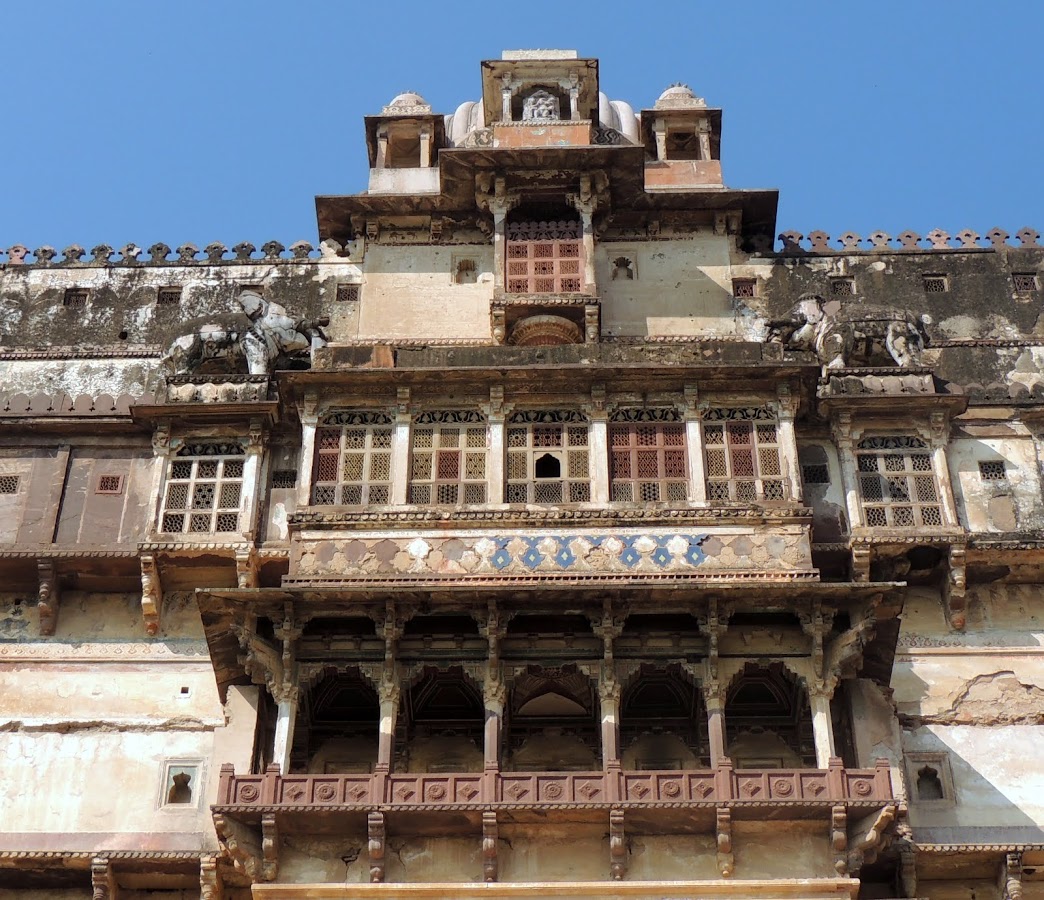 |
| The top portion of the palace from the ground. Note the different types of work - Jaalis, brackets, the ribbed dome which is just barely visible, the smaller minarets, the Ganesha right at the top, the two massive elephants which stand up there on the top, remnants of tile work on the walls, and the glimpses of the paintings you can see on the ceiling of the balcony |
The Datia palace is built on a granite ridge overlooking the
town. The architecture is a combination of Rajput and Islamic styles, a clear
influence of the relations between the Mughal Emperor and the Bundela king.
This is emphasised by the use of red sandstone, which was considered the
imperial stone. The seven storeyed
structure towers over the town, and is considered one of the best examples of
Rajput architecture of the period.
The synthesis of Rajput and Islamic aesthetics is visible right
at the entrance.
Over the arched entrance so typical of Islamic Architecture,
is painted Ganesha, the remover of obstacles in Hindu thought.
Below Ganesha, painted on the side of the arch, is a warrior,
complete with sword, riding a dragon, chasing a deer, in the forest.
 |
Sher Dor Madarssa, Registan Complex, Samarqand, Uzbekistan.
Photo credit: Sudha Ganapathy. |
Don’t you think they are eerily similar? Could this be a
representation of the same motif, albeit modified to suit local sensibilities?
Getting back to our monument, the lower levels were built for those who would accompany the
Emperor. These would have been the public areas of the palace as well.
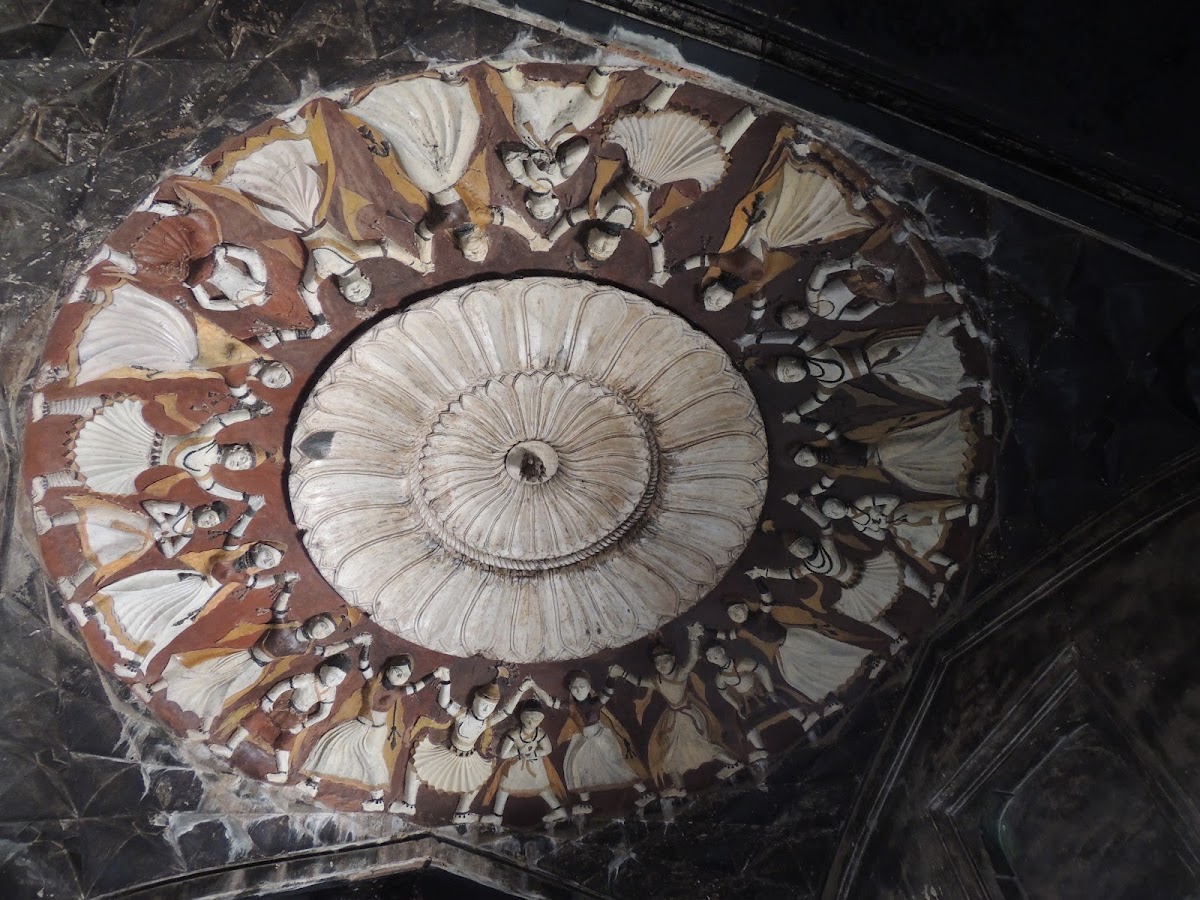 |
| The Ras-Leela painted on the ceiling of a room on the first floor. |
 |
| A balcony on one of the lower levels, with the ceilings brightly painted |
The upper levels are situated amidst courtyards, which our
guide explained were in a Swastika pattern.
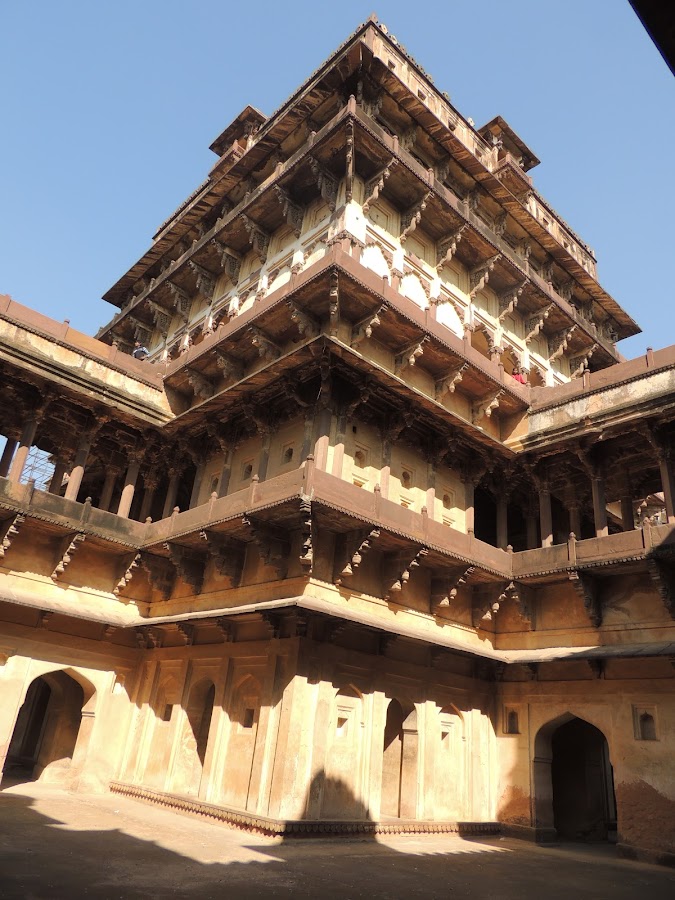 |
| View of the central structure from the Third floor |
The private rooms of the palace, which would have housed the
King’s quarters, along with his durbar hall rise from this central structure,
and are capped by ribbed domes, which would once have been covered by intricate
tiled work. Today, only patches of these tiles remain, and work is on to
maintain what remains, and restore what is possible.
 |
| The final three levels of the central structure.. the private quarters |
Jaalis (lattice work) dominate the design, letting in light in
beautiful patterns.
The interiors of the palace would have once been covered in
paintings, including the areas of the balconies and the passages. Today, only a
few of these remain, and have been cordoned off, in fear of further damage. We had
to peep through either small windows or through gaps in the door to see these,
despite the caretaker being with us!
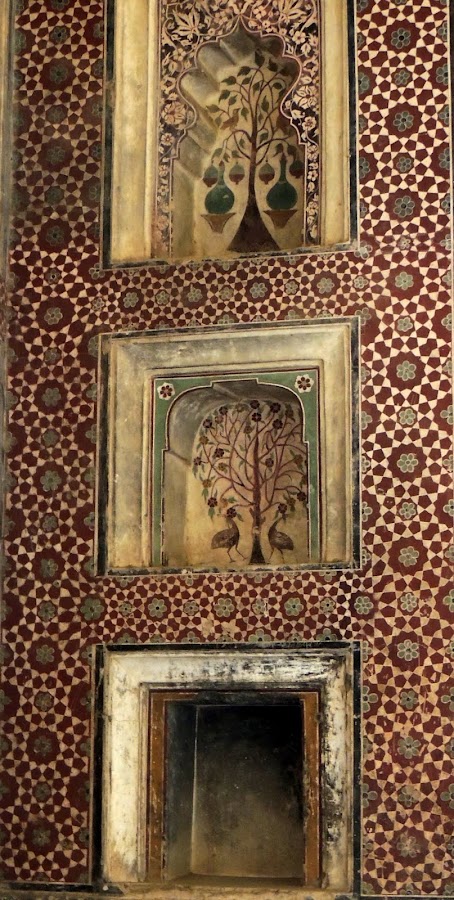 |
| This room seems to be painted all over with such detailed work. However, it has recently been cleaned, and locked up, to prevent any damage to the paintings. Sadly, I had to click this through a gap in the door, which is why none of these paintings are clear in the photographs. |
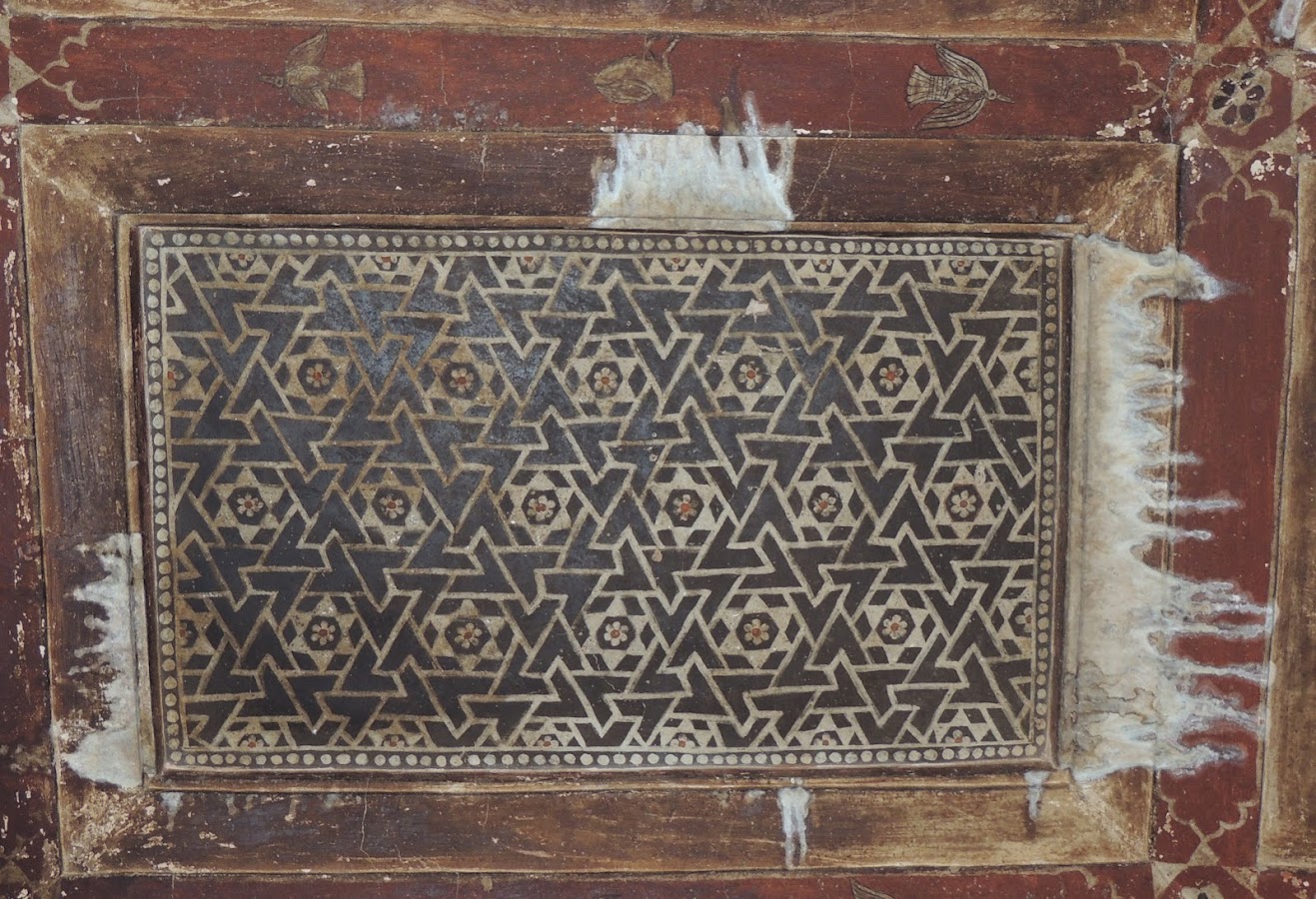 |
| Paintings like these line the walls of the passages and the corridors. Notice the difference in styles between this one and the earlier ones, which are all from the royal quarters. |
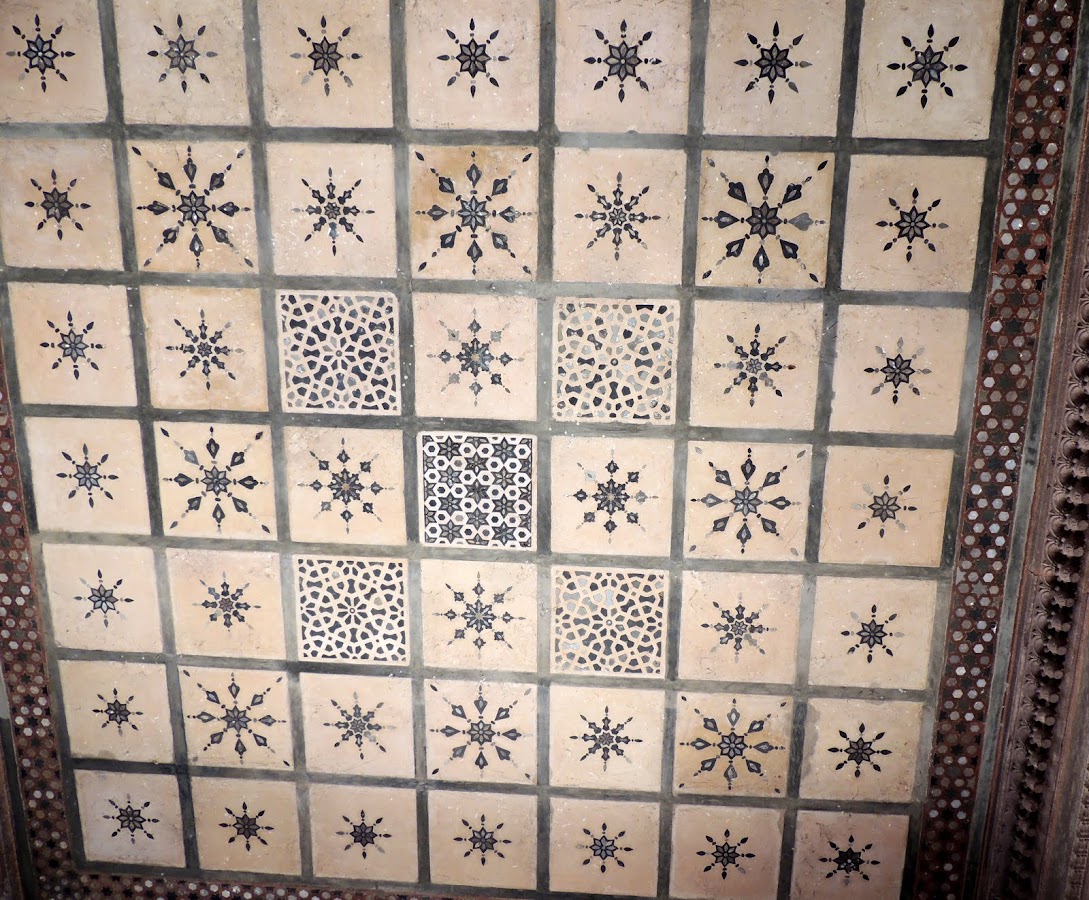 |
| The ceiling of one of the central rooms, which might have been a sort of audience hall. Believe me, it looks way more impressive than it appears in this photograph! And while I am not sure, I would think this is inlay work, though I have never seen it on ceilings before. |
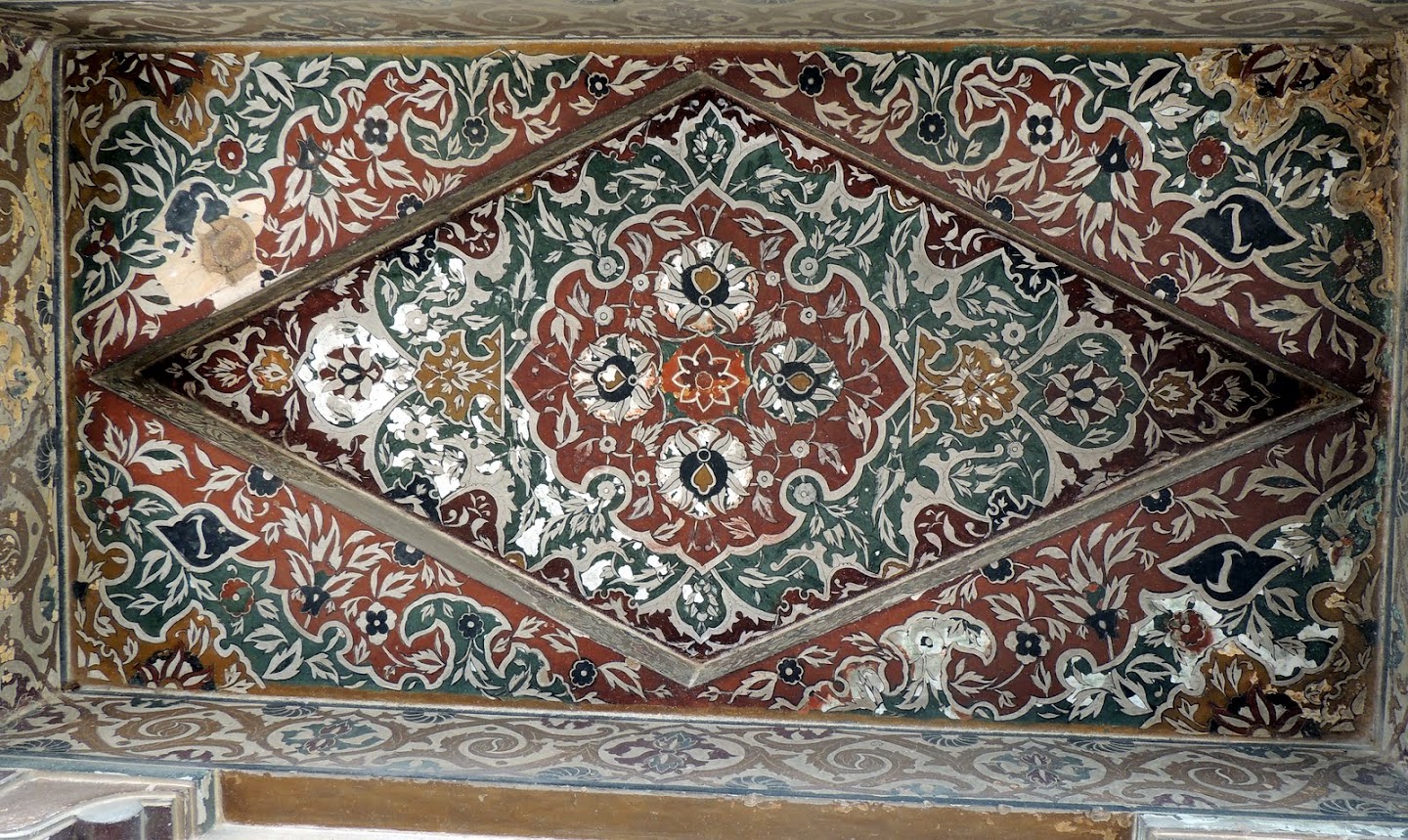 |
| This intricate painting is on the ceiling of one of the balconies of the royal residence. The detail and colours are beautiful! |
 |
| Some of the inner walls seem to have had tile work too... like this one. |
The windows of the upper levels give us a wonderful view of the
town below us, and I can imagine what a sight it must have been, back in the
seventeenth century when this palace was built. It must have been an
uninterrupted view of the wilderness, punctuated by the sight of the lakes, fort
and other palaces in the town. What a beautiful sight that must have been! As we
stood in the small balcony, eyes shaded from the sun, staring up at the
exquisite patterns painted above us, the breeze was quite strong, and our guide
warned us to be careful.
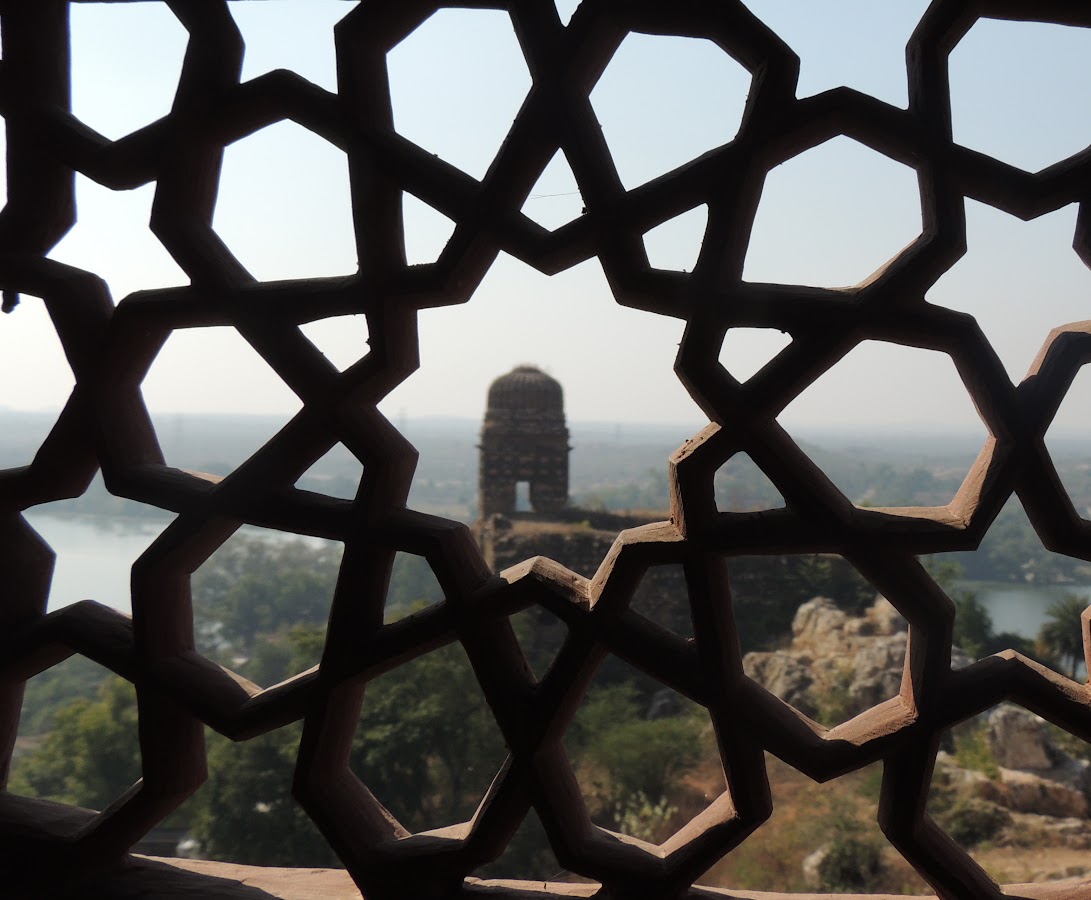 |
| view from one of the latticed windows |
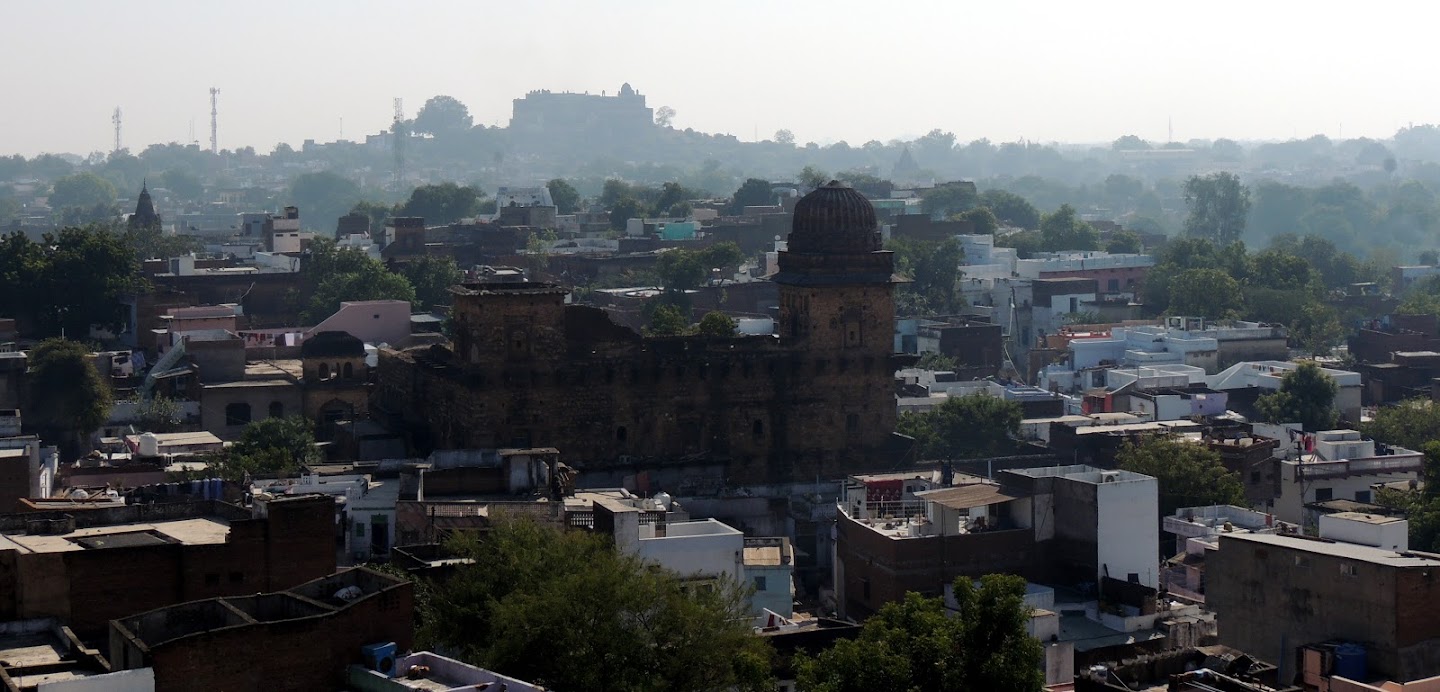 |
| The town of Datia, with its palaces and fort, stretching out to the horizon on one side of the palace |
A bunch of youngsters arrived, their voices heralding their advent
from a distance, and our guide excused himself, saying he had to ensure they didn’t
do anything foolish, like scribble on the wall, or try to climb down from one
of the balconies! We were left alone to enjoy the temporary peace, musing on
the purpose for which this palace was built.
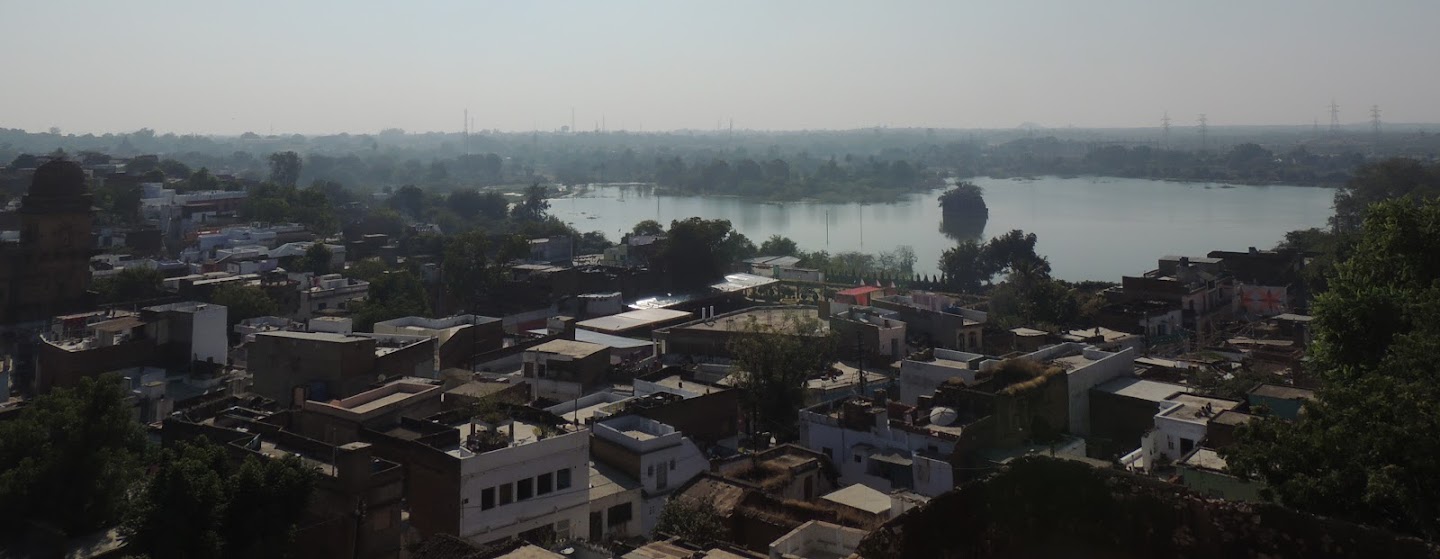 |
| The town and the lake on the other side of the palace, and a glimpse of the wilderness which lies beyond. |
“What a waste!” was my only thought, for the palace was never really
used.
Accounts of Jehangir’s visit to Bundelkhand differ in their
narrations. While some say that he stopped at this palace for just one night,
others say he never stayed here, going straight on to Orccha instead, where he
stayed for a few days at the palace named after him.
Whether Jehangir actually stayed here or not, all narrations
agree on one thing – this palace was never used by anyone else. It was built
for the Emperor, and thus, it would be sacrilege for anyone else to stay there.
Besides, the royal family had their own palace, at the fort. Why would they
live here?
And so, this gorgeous palace, considered one of the best examples of
the style and the period, was fated to remain unoccupied, ignored, forgotten.
To be honest, I hadn’t even heard of Datia when I planned my
trip to Gwalior, Orccha and Khajuraho. Then, the week before I was to leave, I attended
a talk by Dr. Smita Dalvi on Islamic Aesthetics, and she mentioned Datia in the
context of use of imperial red sandstone. The photos she showed us were so
inspiring, that I modified my plans to include Datia in my itinerary, a
decision I am so glad I made!
It is sad to see that Datia remains off the tourist map. I can
only hope that the work being done right now will restore the palace to its
former glory. And hopefully, the ASI and the Madhya Pradesh Tourism Department
will work together in making people aware of the wonderful heritage that lies
hidden here.
Information:
- Location: Datia is
located in Madhya Pradesh, about 80 Km from Gwalior, on the route towards
Jhansi. Jhansi is about 28 Km away.
- How to Reach:
- By Train: Datia has a
railway station, but only a few trains stop here. The Gwalior to Jhansi trains
have a halt, as do a few trains going from Delhi to Jhansi.
- By Road: It is easiest to
visit Datia by road, either from Gwalior, or from Jhansi. Buses are available
from both cities, though their timings are erratic. It is best to hire a
vehicle from either town.
- Where to Stay: There are
hardly any good options for stay at Datia. Stay either at Gwalior, Jhansi or
Orccha and make a day trip to Datia.
- Suggestions: Hire a
vehicle from Gwalior, and visit Datia and Jhansi en route to Orccha. Keep at
least a couple of hours for Datia alone and plan accordingly.

Comments
Post a Comment
Thanks so much for stopping by. Please leave a comment for me so that I will know you have been here....